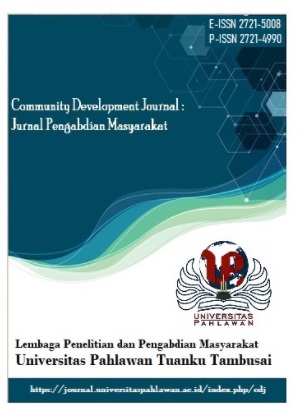An Analysis of Students’ Inhibition Level on Synchronous Class Using Video Conferencing
DOI:
https://doi.org/10.31004/jrpp.v3i2.1360Keywords:
COVID-19 Pandemic, Inhibition, Videoconference Class.Abstract
The COVID-19 pandemic has successfully forced a global shutdown of several activities, including in educational sectors, and this has resulted a migration of universities with online learning as the educational media (Adedoyin & Soykan, 2020). However, the writer noticed that students are less responsive toward the lecturer’s words during the synchronous class using a videoconference. One of aspect that might create this situation is inhibition, which is sets of barricades to shield ones’ ego (Brown, 2000) or a temperamental proclivity to reveal caution, anxiety, or restraint in reaction to unfamiliar surroundings, objects, and circumstances (Kagan et all, 1988). Therefore the writer want to find out whether if the decreased intensity of students’ responsiveness is influenced by inhibition during the video conference classes. There were 33 students from Tidar University's English education department who participated in this study. The participants were received open-ended questionnaire adapted from Mohseni and Ameri (2010). The findings revealed that there are inhibition that students experienced during the learning process in IVC class. The most influencing factors are affective factors and the factors that come from classroom interaction, including the fear of language evaluation.References
Abedini, F., & Chalak, A. (2017). Investigating the Inhibitive Factors in the Speaking of Iranian. Journal of Applied Linguistics and Language Research, 4(6), 82-97. http://www.jallr.com/index.php/JALLR/article/view/636
Adedoyin, O. B., & Soykan, E. (2020). COVID-19 pandemic and online learning: The challenges and opportunities. Interactive Learning Environments, 1-13. https://doi.org/10.1080/10494820.2020.1813180
Al-Samarraie, H. (2019). A scoping review of videoconferencing systems in higher education. The International Review of Research in Open and Distributed Learning, 20(3). https://doi.org/10.19173/irrodl.v20i4.4037
Anderson, T. (2011). The theory and practice of online learning (2nd ed.). Edmonton: Athabasca University Press.
Brown, H. D. (2000). Principles of language learning and teaching. Prentice Hall.
Cohen, L., Manion, L., & Morrison, K. (2013). Research methods in education. Routledge.
Coronavirus. (2020, January 10). https://www.who.int/health-topics/coronavirus#tab=tab_1
Creswell, J. W. (2009). Research design: Qualitative, quantitative, and mixed methods approaches. SAGE.
Danili, E., & Reid, N. (2006). Cognitive factors that can potentially affect pupils’ test performance. Chem. Educ. Res. Pract, 7(2), 64-83. https://doi.org/10.1039/b5rp90016f
Fry, K. (2001). Eâ€learning markets and providers: Some issues and prospects. Education + Training, 43(4/5), 233-239. https://doi.org/10.1108/eum0000000005484
How to social distance during COVID-19. (2020, May 13). American Red Cross | Help Those Affected by Disasters. https://www.redcross.org/about-us/news-and-events/news/2020/coronavirus-what-social-distancing-means.html#:~:text=If%20you%20must%20go%20in,shops%20or%20any%20other%20place
Hrastinski, S. (2008). Asynchronous and synchronous e-learning. Educause Quarterly, 31(4), 51-55. https://er.educause.edu/-/media/files/article-downloads/eqm0848.pdf
Humaera, I. (2015). INHIBITION IN SPEAKING PERFORMANCE. Journal of The Association for Arbic and English, 1(1), 31-50. http://dx.doi.org/10.31332/lkw.v1i1.379
Kagan, J., Reznick, J. S., Snidman, N., Gibbons, J., & Johnson, M. O. (1988). Childhood derivatives of inhibition and lack of inhibition to the unfamiliar. Child Development, 59(6), 1580. https://doi.org/10.2307/1130672
Krathwohl, D. R., Bloom, B. S., & Masia, B. B. (1973). Taxonomy of Educational Objectives, the Classification of Educational Goals. Handbook II: Affective Domain. New York: David McKay Co., Inc.
Kurtus, R. (2019, August 11). Overcome the fear of speaking to groups. School for Champions by Ron Kurtus - online lessons for those seeking success. https://www.school-for-champions.com/speaking/fear.htm#.X5EkF9AzbIU
Mohseni, A., & Ameri, A. (2010). Inhibition revisited in EFL learning/teaching. Journal of language and Translation, 1(1), 39-50. http://ttlt.azad.ac.ir/article_514727.html
Richards, J. C., & Schmidt, R. (2002). Longman dictionary of applied linguistics and language. Harlow: Longman.







